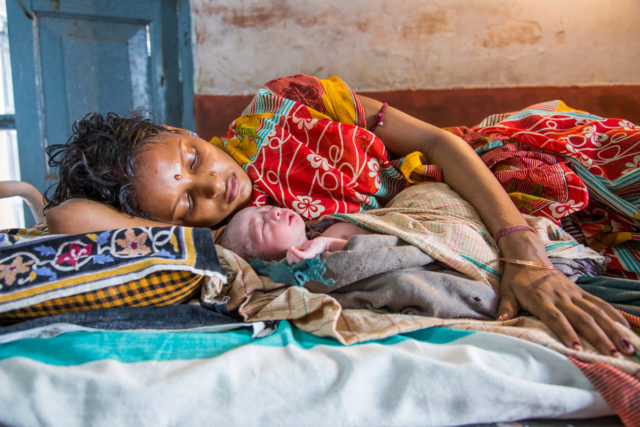
Maternal immunization (MI) has long been implemented effectively to combat neonatal mortality in low- and middle-income countries (LMICs) as well as in high-income countries. Vaccinating a woman during pregnancy enables the transfer of immunity to the fetus in utero, which can protect infants, particularly during the vulnerable first months of life before they can receive their own vaccines. This approach has been at the core of maternal-neonatal tetanus programs for decades.
New maternal vaccines are now on the horizon with the potential to protect pregnant women, fetuses and newborns against other perinatal and infant infectious diseases such as group B streptococcus (GBS) and respiratory syncytial virus (RSV).
The world has made impressive advances in reducing child mortality over the last two decades, but despite overall progress, reductions in deaths among newborns have declined at a slower rate than overall infant and under-5 deaths. More than 2.5 million newborns still die each year, primarily in LMICs, and neonatal mortality now accounts for the largest share (44%) of under-5 mortality. Approximately 36% of neonatal deaths are due to infection.
New interventions are needed to further reduce under-five mortality in young infants by addressing infectious diseases that are not preventable by other interventions. To this end, promising vaccine candidates against two pathogens – GBS and RSV – are in clinical development, with a recent RSV vaccine trial marking the first time a vaccine is in phase III clinical development in pregnant women.
New vaccine candidates hold great potential for protecting the health of newborns and infants. An effective maternal RSV vaccine could help avert over 30 million episodes of RSV-associated acute lower respiratory infections and 118,000 deaths in children under the age of five, most of which occur in LMICs. Maternal GBS vaccines are in early clinical development and could potentially avert approximately 90,000 infant deaths and 57,000 stillbirths; GBS vaccines may also help reduce maternal morbidity and mortality, and provide more equitable access to prevention where intrapartum prophylaxis (IAP) is not consistently available.
Extensive preparation will be required for the introduction of these potential new vaccines, particularly given their likely delivery through antenatal care (ANC). Preparations will require the cooperation and expertise of various stakeholders, including policymakers and practitioners from both the maternal, newborn and child health (MNCH) and immunization fields. While these stakeholders all operate from the premise of providing the best care possible to the populations they serve, they often employ different strategies in their approach to service delivery. Bridging these differences will be essential to the successful introduction of new vaccines via ANC.
MI could provide an opportunity to improve the quality of ANC by bringing together the collective expertise of both the MNCH and immunization fields, as they collaborate on the design and implementation of delivery strategies. The Expanded Programme on Immunization is considered among the most successful public health programs, and may offer lessons to improve ANC. Similarly, National Immunization Technical Advisory Groups (NITAGs) and other bodies that approve and recommend new vaccines could benefit from the expertise of MNCH specialists to support their evaluation of maternal vaccines.
Beyond knowledge-sharing and shared decision-making, the integration of MI into ANC programs may bring additional resources and provide an impetus to strengthen quality of care, particularly in resource-constrained settings. New approaches to ANC, including group ANC, hold promise for improving quality and reducing the burden on providers, thus enabling ANC to serve as a platform not only for MI, but for a variety of interventions appropriate to women during that stage of life.
While we await full safety and efficacy results for new vaccine candidates, we know that introduction will take time. MNCH and immunization stakeholders have already begun to come together, and we must step up collaboration to create an enabling environment for implementation of these new, potentially life-saving interventions. Increased collaboration can only benefit the health and lives of pregnant women and their children.
About the authors :
 Amy Pollack leads the Bill & Melinda Gates Foundation’s Maternal, Newborn & Child Health team, overseeing strategic planning, portfolio management, and coordination.
Amy Pollack leads the Bill & Melinda Gates Foundation’s Maternal, Newborn & Child Health team, overseeing strategic planning, portfolio management, and coordination.

Ajoke Sobanjo-ter Meulen leads the Bill & Melinda Gates Foundation’s maternal immunization initiative.
Competing Interests: All authors have read and understood the BMJ Group policy on declaration of interests and declare they have nothing to declare.